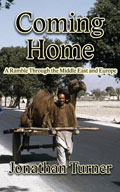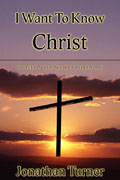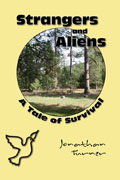Back in the 1980’s one of the most popular books on management making the rounds was In Search of Excellence by Peters and Waterman. Not long after the book was published, several of the ‘excellent’ companies they wrote about ran into trouble. Some of the principles and ideas discussed in the book have since fallen from favor, too, but one of them has intrigued me from the time I first read it.
Scaling down for growth
The authors wrote that many of the excellent companies ignored theoretical economies of scale and deliberately designed their systems and plants to be sub-optimal. It turns out that by keeping things small, these companies were able to achieve efficiencies which more than made up for any economy of scale. They reported that things started to go wrong whenever there were more than about 1,000 people under one roof.
As I recall, it was around this same time-frame when the church-growth movement really took off. Seemed like everybody started talking about how to boost attendance, membership campaigns and the need to build bigger facilities. The drive toward the mega-church was on.
Along with everybody else, I attended workshops and seminars that were supposed to tell us how to make it all happen. I was probably as caught up in the excitement as anybody. Yet, that figure of 1,000 people continued to haunt me. Was it possible for a congregation to get too large? Was there a point where friction and inertia overcame the advantages of a large body count in the pew? I recall making the suggestion that when a congregation got to about 500-600 maybe it would be best for it to hive off a separate group of 200 or so instead of trying to grow larger.
A glass ceiling
In truth, though, the question was largely academic. In spite of best intentions and efforts, most of the congregations I knew remained small. It seemed impossible to grow much past the 100 mark. In the arrogance of youth I laid much of the blame on inept leadership. To my critical eyes, the reason for the failure to grow beyond a certain point was that most church leaders were woefully ignorant of the basics of management. As if I, who had never had to manage anyone, knew anything about it!
Time moved on. So did I. I left a small congregation which had plateaued for a much larger, growing one in a different city. Through various circumstances, the Lord knocked some of arrogance out of me. I also found out that large congregations can start having serious trouble long before the 1,000 member mark is reached, or even the 500-600 I had proposed. If there was an ideal size, I had not yet observed it.
Re-thinking
Fast forward 20 years. The Lord called me and my family to be part of the leadership team in a new church plant. Suddenly, the issue of church size became an issue again. Were we going to embrace the mega-church concept, or would we choose a different model? For many reasons we deliberately chose to keep the size of the congregation relatively small. How small? We didn’t know, but decided to grow by multiplying congregations rather than trying to increase congregation size beyond a certain point – whatever that point is.
Is there an ideal congregation size? At what point should a congregation spawn a new one? A while back, my brother-in-law sent me an email in which he passed on the tidbit that Reuel Lemmons (a well-known leader among the Churches of Christ) had said that beyond a size of 150 we can’t know everyone very well. The implication was that congregations should be somewhat smaller than that. Since my b.-in-l. was unable to provide references and Lemmons is dead, that was little more than an interesting factoid. Then, I read the book, Radical Restoration by F. LaGard Smith. (An excellent and provocative read, by the way.) In it he, too, mentions the figure of 150 and, more importantly, gave a source: The Tipping Point by Malcolm Gladwell, who, in turn, draws on the studies of Robin Dunbar.
Channel overload
The key insight is that we are only able to handle a limited amount of information before our minds are overloaded. In social contexts, on average, we can only handle about 150 channels of communication and/or interaction. In other words, we are capable of relating to only about 150 people well, and knowing them in the sense of how they are interconnected to us and with one another. Beyond that number, interaction and communication breaks down.
Something which concerns me is the sheer number of references pointing to Dunbar’s work. Now that I know the source, it seems like references to the “Rule of 150” are popping up everywhere. It feels like everyone is jumping on this single-source bandwagon. It has the feel of a fad about it. Frankly, I’m skeptical of Dunbar’s theories. Anything which is based on evolutionary psychology and the relative sizes of primate brains raises a red flag or two. But even if Dunbar’s theories prove to be pure hokum, that doesn’t invalidate the observations about the limitations of social channels. We all know that relationships start to break down within a group at a certain level. That fact remains even if the speculation about how the fact came about is moonshine. The real question is where that breakdown begins. Is 150 the right number? It feels right. I would feel a lot more comfortable if there were more independent confirmation but, I’m willing to accept the number of 150 pending further inquiry.
Adding complexity
“Hold it!,” you say. “If this number of 150 is so all-fired important, then how come so many groups exist which are larger than 150? What keeps them together?” It’s not that groups larger than 150 can’t exist. Obviously, they do. But Gladwell points out that the number of 150 is really a point of complexity. Below it, we can keep track of one another informally. Above it, we must introduce systems and procedures in order to function smoothly. If he is correct, this is a major reason why so many congregations find it impossible to grow much beyond 100 or so. They simply have not developed, and put in place, the organization which will allow them to. There are a lot of other factors which have a bearing on growth, but that’s a subject for another blog.
A practical consideration
If the observation about the limits on social relationships is correct, it sheds light on something which has often been commented on in many congregations. Christians should be reaching out to their friends and acquaintances with the gospel message. Yet it seems that most Christians become ineffective in reaching others within a few years after their own conversion. Is it possible that as a new convert becomes more and more integrated into the church that we overwhelm his social capacity? He has no room left for relationships outside the church body. Since he has no relationships his influence is minimized. If this is true, it is a powerful argument for keeping the size of congregations relatively small.
Acting as a body
There’s another practical implication of this social channel limit business. Gladwell points out that a group has what the psychologists call “transactive memory.” That is, we remember more as a group than we do individually. We rely on others to fill in the details we have forgotten. The same is true of skills and talents. When everyone knows everyone else, tasks are naturally delegated to those who are best suited to perform them. When you need an answer, or you need something done, you know who to go to. But what happens if the group is too large? The social and relational connections are broken. You no longer know everyone, and because you don’t, you no longer know who to go to for help.
After pondering this a bit, I couldn’t help but think of what Paul wrote in 1st Corinthians 12. There Paul compares the church to a body made up of many different, yet interdependent, parts. The eye is not the same as the hand, and both need the other in order to function properly. But what happens if the eye doesn’t know about the hand? How can they possibly work together as a body? The implication is startling: If a congregation is going to function as a body, we must keep its size within our social channel capacity. The natural upper limit, seems to be about 150 people.
The Jerusalem church
Come now! If all this is so, what about the early church? 3,000 people were added to the church in Jerusalem on the day of Pentecost alone. Okay, let’s look at it. We tend to think of the church in Jerusalem as one big, monolithic, entity. It’s true that at least for a while the church met in the temple courts. But there is something else which didn’t really make an impression on me until I started thinking about this thing of limits. Not only did they meet in the temple courts, they also broke bread in their homes. (Acts 2:46) This implies that the larger group was actually composed of many small ones. How many and how small? Who knows? But if the groups averaged 50 people, just 60 groups would have accommodated the entire 3,000 converts. 50 people in one home? Those who have grown up in the West have a hard time imagining it, but I’ve often seen that many gathered in one small home in the East. Hey, we once crammed 21 people into a Jeep station-wagon! Well, what about leaders for these groups? The 120 believers which met before Pentecost had been taught directly by Christ. It’s more than likely that a number of them were among those Christ sent out on preaching tours. Under the oversight of the Apostles, these believers could easily have provided the leadership the various groups needed. Another source of leaders was the converts, themselves. There must have many men of high caliber among them – men such as Philip and Stephen. Acts 6:7 says that a large number of priests were converted, also. Here were competent men, already highly trained in the Scriptures, who could have stepped into leadership roles almost immediately. As I think about it, it seems very likely that the church in Jerusalem was able to easily keep below the 150 people limit by constantly adding small groups.
Lower limits and the military metaphor
If there is a natural upper limit to congregation size, is there also a lower limit? We don’t like to think so. After all, Jesus said He would be with even 2 or 3 who gather in His name. (Matthew 18:20) Yet, unless those 2 or 3 are extra-ordinarily gifted, it is hard to imagine them as a fully functioning body. Another scriptural metaphor for the church may shed some light on the question of a effective lower size limit for a congregation. Christians are called soldiers. So, what can we learn from the size of military units? Ancient armies were often organized by multiples of ten. For example, in both the Roman and Mongol armies, the smallest unit was composed of 10 men. Ten of these units formed the next grouping, and so on. In the modern US army, the smallest unit capable of independent movement is the platoon. Light infantry platoons are composed of 3 squads of 10 men. Based on this, which is the distilled wisdom from thousands of years of practical experience, it is tempting to say that a congregation less than 30 is not viable. At the least, it is probably too small to be stable, or effective. This may be why so many house churches don’t seem to live up to their promise.
Interestingly, a company in the US army, which is the basic military unit which can perform a battlefield function on its own, is composed of 100 to 200 men. This fits amazingly well with the notion of the “Rule of 150.” A company is generally small enough for everybody to know each other and everybody’s capabilities. Even those companies which are larger than 150 can function well because of the structure and organization imposed on military units. They have compensated for the limitations of our ability to form natural, informal relationships with large numbers of people, by adding structure.
Summary
Does structure, or context, affect the size of congregations? Yes, but that’s for a different entry. For now, I’ll just go on record to say that a congregation should probably be larger than 30 people, but not more than 150. When it grows to about 120 or so, it should begin to plan seriously to multiply by dividing itself.













